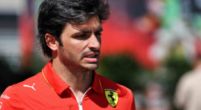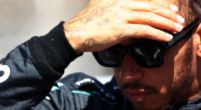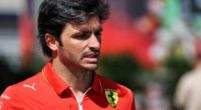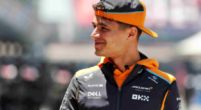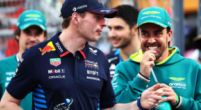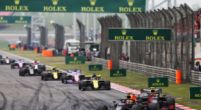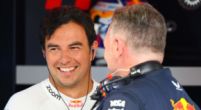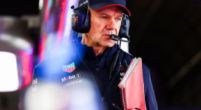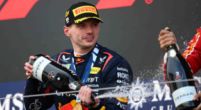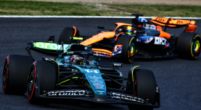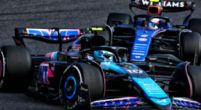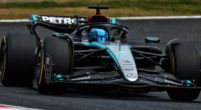Column
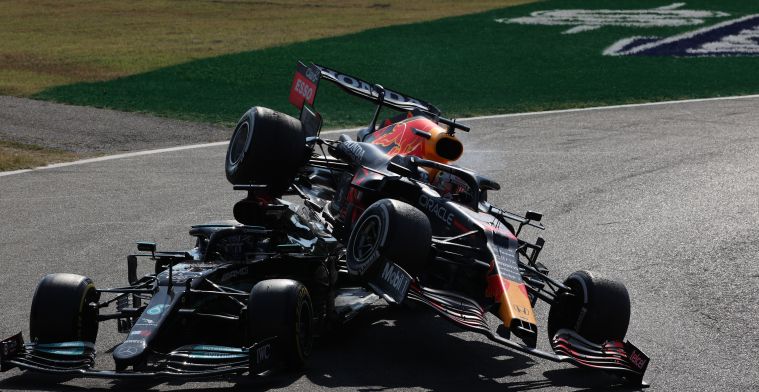
The precedents set by the FIA and stewards in 2021 for the final two races
With two races left, title protagonists Max Verstappen and Lewis Hamilton are separated by only eight points. This season will certainly go down as one of the greatest championship battles in recent history, featuring an all-time great pitted against a young and hungry pretender to the throne. The momentum has ebbed and flowed at various points throughout the season, and here we analyse the key moments and battles in the build-up to the Jeddah Grand Prix.
British Grand Prix
Following a disappointing fourth place at the Austrian Grand Prix, a newly resurgent Hamilton set the fastest qualifying lap at Silverstone, beating Verstappen by two-tenths of a second. However, Verstappen retaliated immediately, taking the lead on lap one of the sprint race after Hamilton’s poor getaway. The pair tussled for the opening few corners before Verstappen built a gap that he would not relinquish for the remainder of the sprint race.
Now on pole for the main event, Verstappen started on the clean side of the grid. However, it was Hamilton that got a slightly better start, which put him into position to attack into Village and The Loop. With the slipstream down the Wellington Straight, Hamilton momentarily pulled ahead, before Verstappen dived down the inside again. It was a brilliant battle, and was exactly what we had hoped for between two giants of the sport.
Following that exchange, Hamilton pulled into another slipstream after Woodcote. Learning from the sprint race, the Briton knew his best chance to win was to overtake before the esses. The Briton faked a dummy and pulled alongside Verstappen into Copse, before washing slightly wide of the apex and making contact with Verstappen’s right rear tire. As a result, Verstappen veered into the barrier with terminal damage. Hamilton meanwhile was able to repair minor damages to his car under the red flag.
Verstappen and Hamilton collide!
— Formula 1 (@F1) July 18, 2021
The title rivals come together at Copse, pitching Verstappen into a high-speed crash.
The Dutchman was able to walk away but he has been taken to hospital for precautionary checks#BritishGP #F1 pic.twitter.com/ol1s9dRJoa
The incident garnered much controversy among pundits and on social media, with the FIA awarding Hamilton a 10-second time penalty for his role in the incident. Hamilton swiftly negated the effects of the penalty, however, overtaking Norris, Bottas (on team orders), and Leclerc in the second stint en route to a record-breaking eighth home win.
Italian Grand Prix
The British Grand Prix wasn’t the only time the two title rivals would make contact. Hamilton lined up in fourth place following a poor sprint race, three places behind polesitter Verstappen. The fast-starting McLaren of Daniel Ricciardo overtook Verstappen into turn one, while Hamilton got past Lando Norris. Hamilton, now firmly in the slipstream of Verstappen, pulled out and attempted an outside overtake on Verstappen at the della Roggia chicane. The Dutchman promptly forced Hamilton off the track, an aggressive manoeuvre that we’ve seen many times throughout this season.
With Verstappen stuck behind Ricciardo and Hamilton behind Norris, the first stint was somewhat stagnant. The course of the race all changed with Verstappen’s eleven-second pit stop on lap 23. Realizing the opportunity to overtake Verstappen, Mercedes pitted Hamilton two laps later. Hamilton also fell victim to a slow stop (albeit only four seconds along), and he emerged fractionally ahead of Verstappen out of the pits.
The 24-year-old, knowing that it would be his last chance to finish ahead of Hamilton, attempted an ambitious move around the outside of the first chicane. Hamilton squeezed his rival, and as a result Verstappen bounced over the sausage kerb, launching his car into the air on top of Hamilton’s. Both were out of the race, as the McLarens stole a surprise 1-2 finish. Given the circumstances, it was almost as if fate had brought the two title rivals together. Verstappen was duly awarded a three-place grid penalty by the FIA for the crash.
São Paulo Grand Prix
Heading into São Paulo, it seemed that the title was slipping away from Lewis Hamilton’s hands. The week prior, he had been beaten soundly by Verstappen at Mexico City, and he desperately needed a win to keep his championship hopes alive. It was announced that the Mercedes driver would take another grid penalty for an engine change; Mercedes hoped that the returns in performance would outweigh the initial drop in position.
Hamilton took pole by four-tenths of a second, but his entire weekend was thrown into jeopardy when he was disqualified for a technical infringement with regards to the opening in his rear wing. Hamilton battled back brilliantly in the sprint, fighting his way to fifth starting from last. With his engine penalty, the seven-time champion was demoted to tenth for the main race. Within a matter of laps, he was already in the podium positions. After overtaking the Red Bull of Sergio Perez, Hamilton set about hunting down his championship rival.
Hamilton made his first attempt at overtaking Verstappen on lap 48. With the aid of DRS, Hamilton inched ahead into the braking zone of turn four. Verstappen broke late in an effort to keep the position, but in doing so pushed both himself and Hamilton well outside the boundaries of the track. The stewards noted the incident, but ultimately chose not to investigate it (much to the annoyance of Mercedes).
Hamilton took a few laps to regroup, before launching another attack on lap 59 that saw him soar to the lead once and for all. From there, he romped to victory by over ten seconds.
Aggressive Racing
We’ve been treated to a number of enthralling battles this year, many of which have passed without incident. We’ve also seen both drivers push the boundaries (and occasionally step over them) to gain any advantage in a championship battle that is so tightly contested.
In Imola, Verstappen started from third but got the perfect launch, and pulled alongside Hamilton immediately. The Dutchman aggressively overtook his rival into turn one, leaving no quarter and forcing Hamilton onto the rumble strips. Given that the incident occurred on lap one of a race in intermediate conditions (where it is difficult to anticipate braking points), the stewards chose not to investigate the skirmish. From then on, he sauntered comfortably to the win, as Hamilton recovered to second following his error at Tosa trying to keep up with Verstappen.
In the Spanish Grand Prix two races later, Verstappen once again dived into turn one, forcing Hamilton to back out and taking the lead. Hamilton was able to seize the lead later in the race due to a clever two-stop strategy and an inherent pace advantage.
Later in the season, Verstappen pushed Hamilton off at the della Roggia chicane to defend his position on Lap 1 of the Italian Grand Prix. Hamilton is no stranger to this manoeuvre either; he has shown such aggressive racecraft in his duels with Rosberg. At the start of the US Grand Prix, Hamilton went down the inside of Verstappen into the turn one hairpin to take the lead, pushing Verstappen slightly off the track.
Since the 2019 Austrian Grand Prix, the stewards have generally taken a hands-off approach to racing. The precedent set with the Verstappen-Leclerc battle allows the driver on the inside the right to the racing line, as long as they are significantly alongside. Effectively, the driver on the inside is allowed to push the driver on the outside off the track, and we have seen a number of instances of this as discussed above.
This precedent was further developed at the 2021 Austrian Grand Prix, where both Lando Norris and Sergio Perez were penalized for pushing an overtaking driver off the circuit and into gravel. This implies that the driver on the inside is allowed to force their pursuer off as long as there is no gravel on the outer extremities of the track.
However, the stewards’ decision in the 2021 Brazilian Grand Prix somewhat contradicts their past decisions. Verstappen was alongside Hamilton at the apex of turn 4 at lap 48, and therefore was entitled to push him off track. However, Verstappen broke late enough that he himself had to go off the track. Given that it was unlikely that Verstappen would have kept the position otherwise, one could argue that Verstappen gained a lasting advantage by going off track (section 27.3 of the sporting regulations). Indeed, Verstappen has been penalized for a violation of the same statute in this year’s Bahrain Grand Prix, where he was instructed to give his position to Hamilton.
The Brazil decision muddies the waters around what isn’t in wheel-to-wheel combat. Ferrari’s Charles Leclerc affirmed such sentiments to Motorsport.com, stating that “That's what I will do if in case these these things are allowed. . . If this is allowed, then overtaking around the outside is going to be very difficult. But yeah, whatever the situation, the decision is, I'll just adapt my driving to it; so I'm fine with both." As such we may see the drivers push the line even further.
What next?
Both drivers will likely have different mindsets coming into the next race. Hamilton effectively has to be flawless and win the next two races to win the championship, given that both he and Verstappen will finish on the podium. As a result of his points deficit, he will have to be more cautious; any incident could halt his championship charge. On the other hand, Verstappen can afford to be more aggressive — any situation where both title rivals fail to score only benefits the Dutchman.
A general trend has developed this season where Hamilton is more likely to yield in battles, perhaps as a result of his experience. Verstappen has developed a reputation for being unrelenting and ruthless, and that has transferred into his wheel-to-wheel encounters; such aggression is a hallmark of many of the greats, Hamilton included (although he was mellowed out in recent years). Given the championship permutations, that trend is only likely to continue. The starts of both remaining races could prove to be the deciding factor.
The championship is still truly up for grabs, and both drivers have their destiny in their hands. May the best man win.




